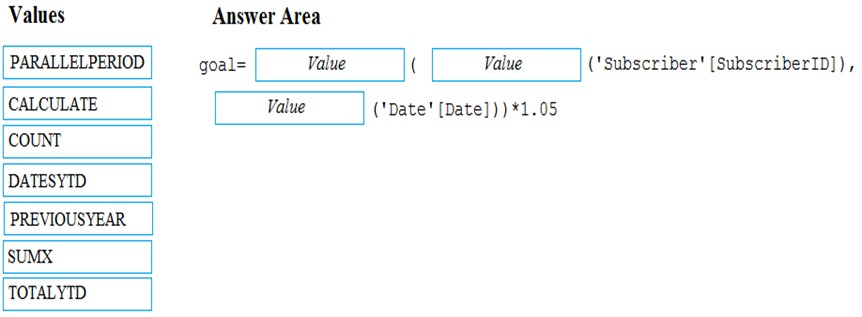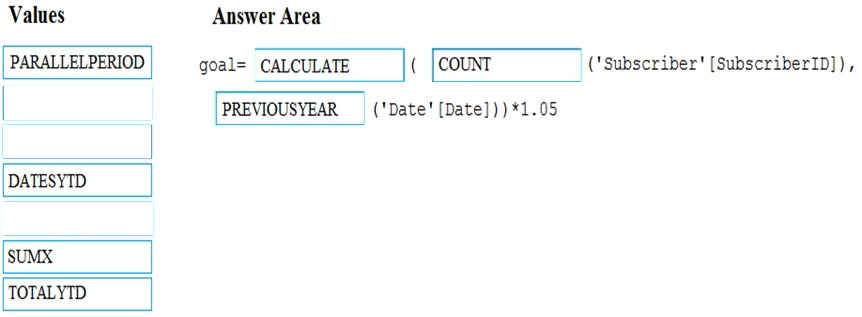

DRAG DROP -
You have the following two tables:
✑ Subscriber (SubscriberID, EnrollmentDate, ServicePlan)
✑ Date (Date, Month, Week, Year)
There is a relationship between Subscriber[EnrollmentDate] and Date [Date].
You plan to create a KPI for the number of subscribers enrolled in the current year.
You need to create a goal that is five percent more than the number of subscribers enrolled during the previous calendar year.
How should you complete the DAX formula? To answer, drag the appropriate values to the correct targets. Each value may be used once, more than once, or not at all. You may need to drag the split bar between panes or scroll to view content.
Note: Each correct selection is worth one point.
Select and Place:

CDL
4 years, 7 months agotinknerd
4 years, 10 months agoSamuelZhang
5 years agodurian
4 years, 10 months agoCYRUSD
5 years, 1 month agocoupet
5 years, 5 months agocoupet
5 years, 1 month agoCorinnaK
5 years, 7 months agoCorinnaK
5 years, 7 months ago